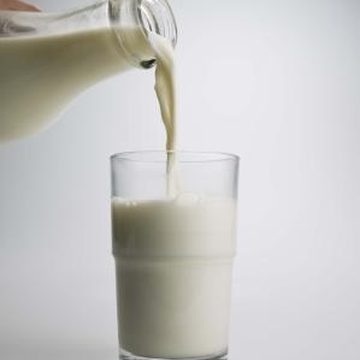So you have been brewing well for quite a while and all has been going well however gradually the kefir has gotten very sour and the curds are thick and hard to seive. What has gone wrong?
The answer is nothing, this is normal and just requires a bit of kefir housekeeping.
Getting the ratio correct
When making kefir, in order to get the best results and in order to keep your grains happy and healthy it is important that you keep the ratio of grains to milk or sugar water correct.

Milk Kefir ratio
We advise keeping the ratio of 1 Teaspoon of grains (this can be heaped) to 250ml of milk. As, once the grains are settled, they generally brew in around 24 hours this is generally enough for most people. More grains means that you need to use more milk and you will eventually end up making more kefir than you could possibly drink so it is quite a good idea to keep the grains to 1 teaspoon.
The signs that you now have too many grains are:
Kefir fermenting very quickly (although this can also happen if temperature is very warm)
Kefir getting very sour and getting very hard curds (the curds are the creamy cottage cheese looking stuff that seperates generally on the top of the brew)
Kefir that is a little slimy or jelly like
When you remove some grains it is always a good idea to store some grains as back ups just in case. To store grains medium and long term they can be frozen and dehydrated. We recommend both.
Water Kefir ratio
We advise keeping the ratio of 3-4 Tablespoons of grains (this can be heaped) to 1L of water and 65-70g of sugar. As, once the grains are settled, they generally brew in around 24 hours this is generally enough for most people. More grains means that you need to use more sugar water and you will eventually end up making more kefir than you could possibly drink so it is quite a good idea to keep the grains to 3-4 tablespoons.
The signs that you now have too many grains are:
Kefir fermenting very quickly (although this can also happen if temperature is very warm)
Kefir getting very sour and vinegary
Kefir that is a little slimy
Grains starting to get smaller
When you remove some grains it is always a good idea to store some grains as back ups just in case. To store grains medium and long term they can be frozen and dehydrated. We recommend both.
To clean the grains:
Kefir grains are essentially a little self contained eco system and therefore rearly need to be washed.
They can occassionally be rinsed in un-chlorinated (boiled and cooled) tap water or filtered water. Gently move the grains around in the water to clean them off and then pop them back in the milk or sugar water as normal (the method is the same for both)
however- we do not recommend that this is done too often as the grains naturally coat themselves in a sticky, gooey coating to protect themselves and its not good to wash this off too often.

Every 3-6 months we do recommend that you starve the grains. This in affect is another way of "washing" the grains but this is done in order to remove any "weed" bacteria that the kefir may have picked up from its environment.
To starve the grains you should rinse them off as above and then pop them in a jar/glass of unchlorinated water or filtered water around 200ml of water.
Cover the grains with a brewing cloth as normal
leave the grains in the water for 24-48 hours (personally i go for 24-36 hours)
then pop the grains back into milk or sugar water and brew as normal,
Starving the grains will re-balance the grains if they have become slightly unbalanced. Like i say it is not something that need to be done very often but it is good housekeeping to do this once in a while.
